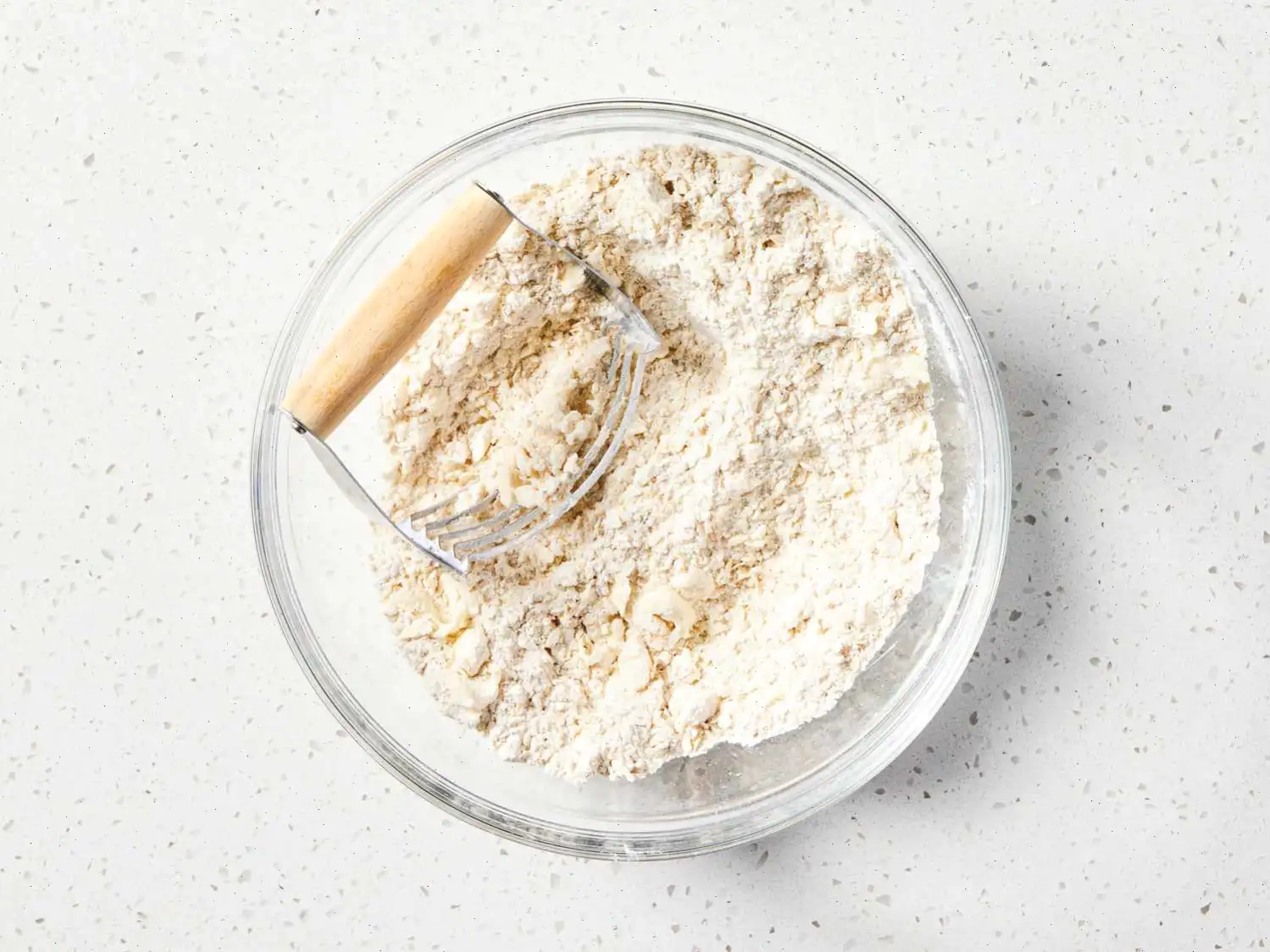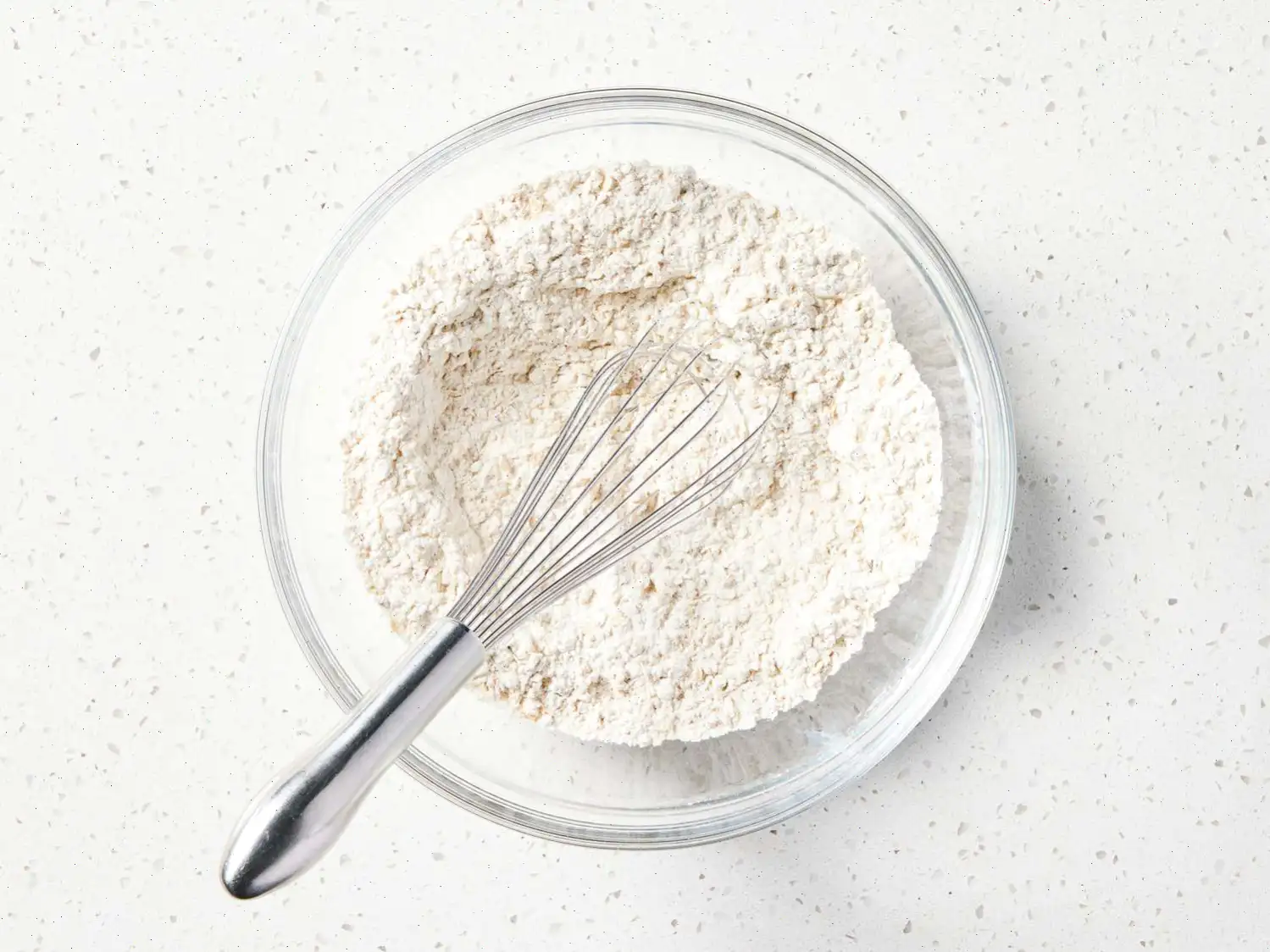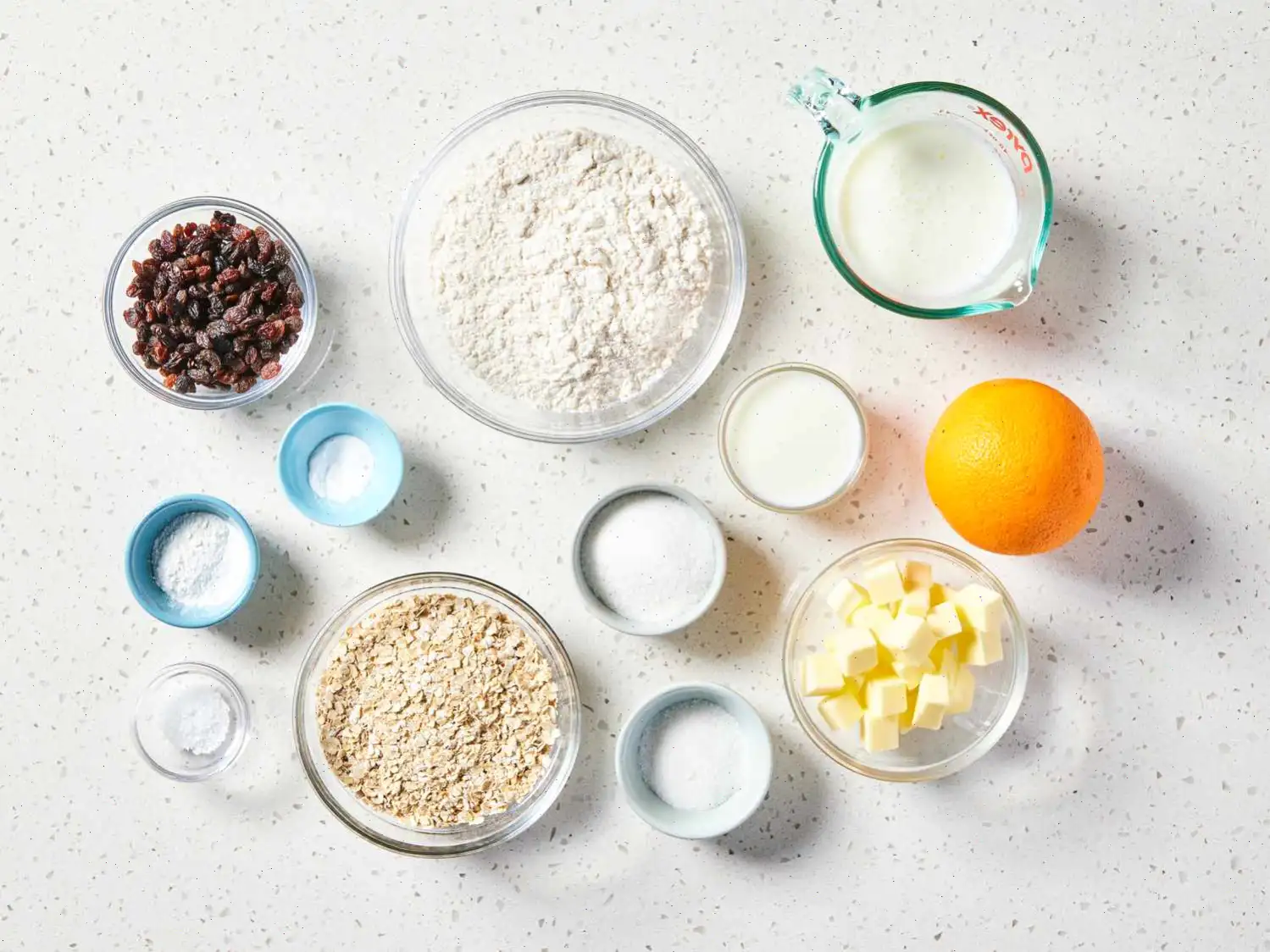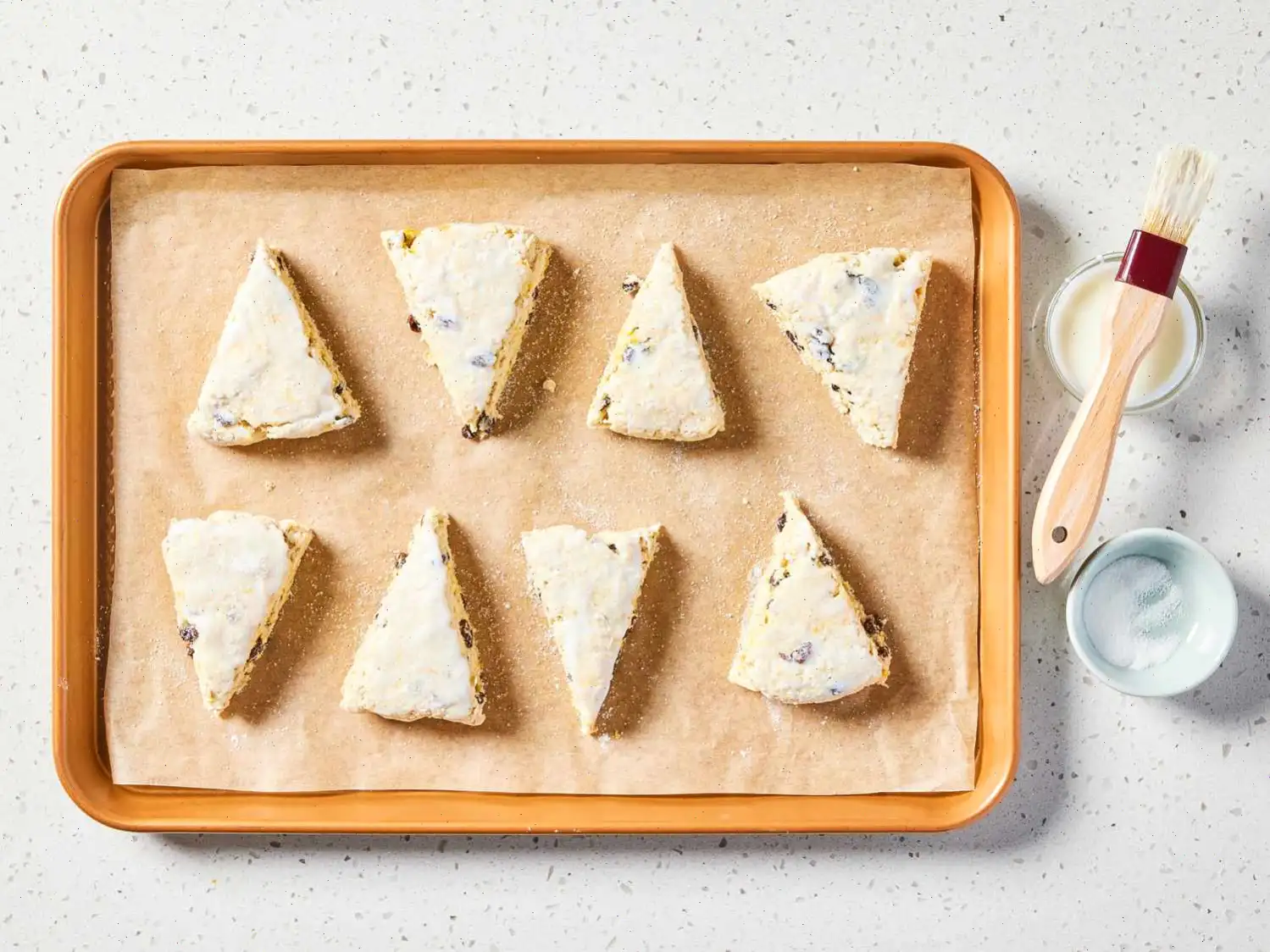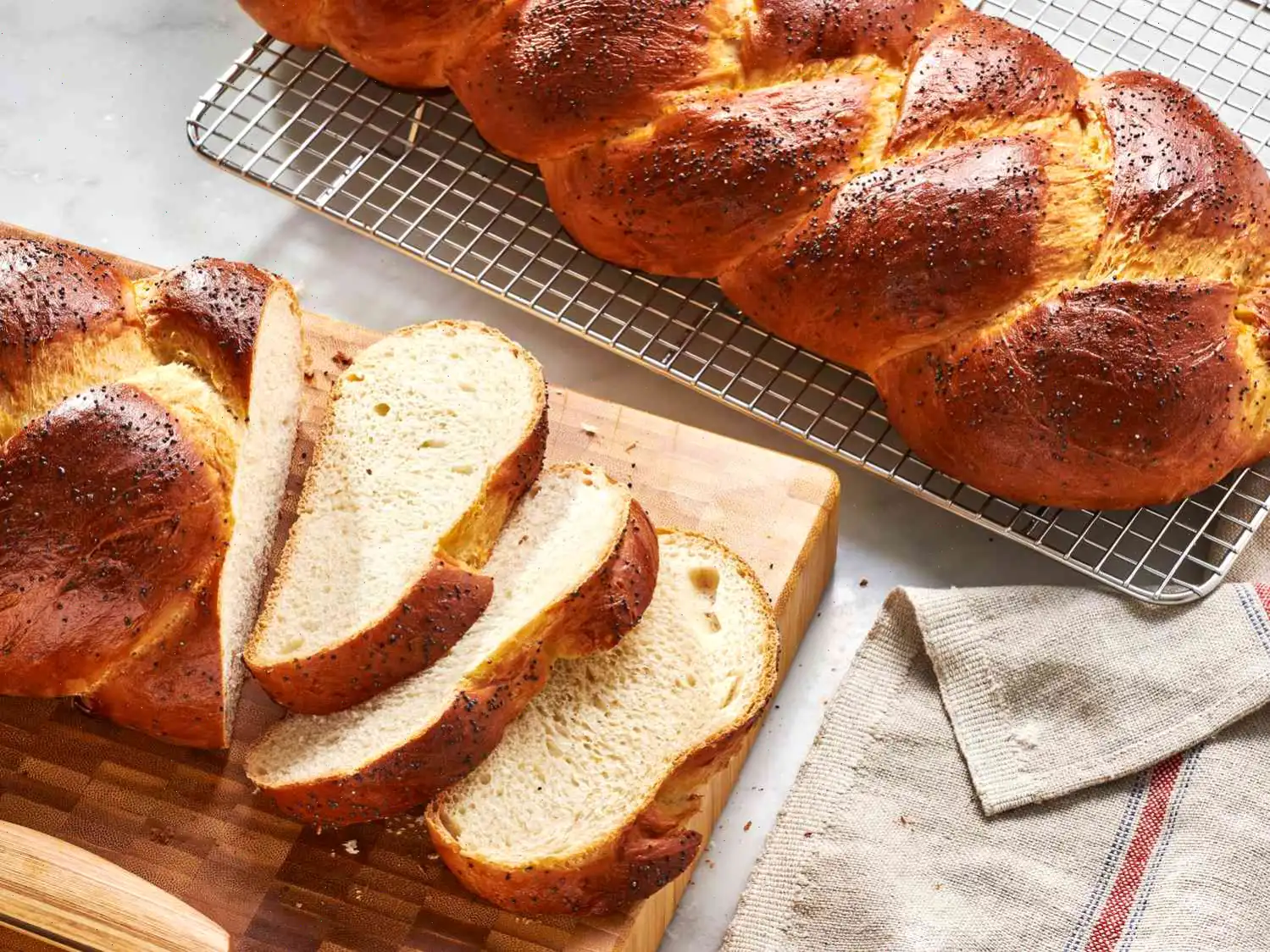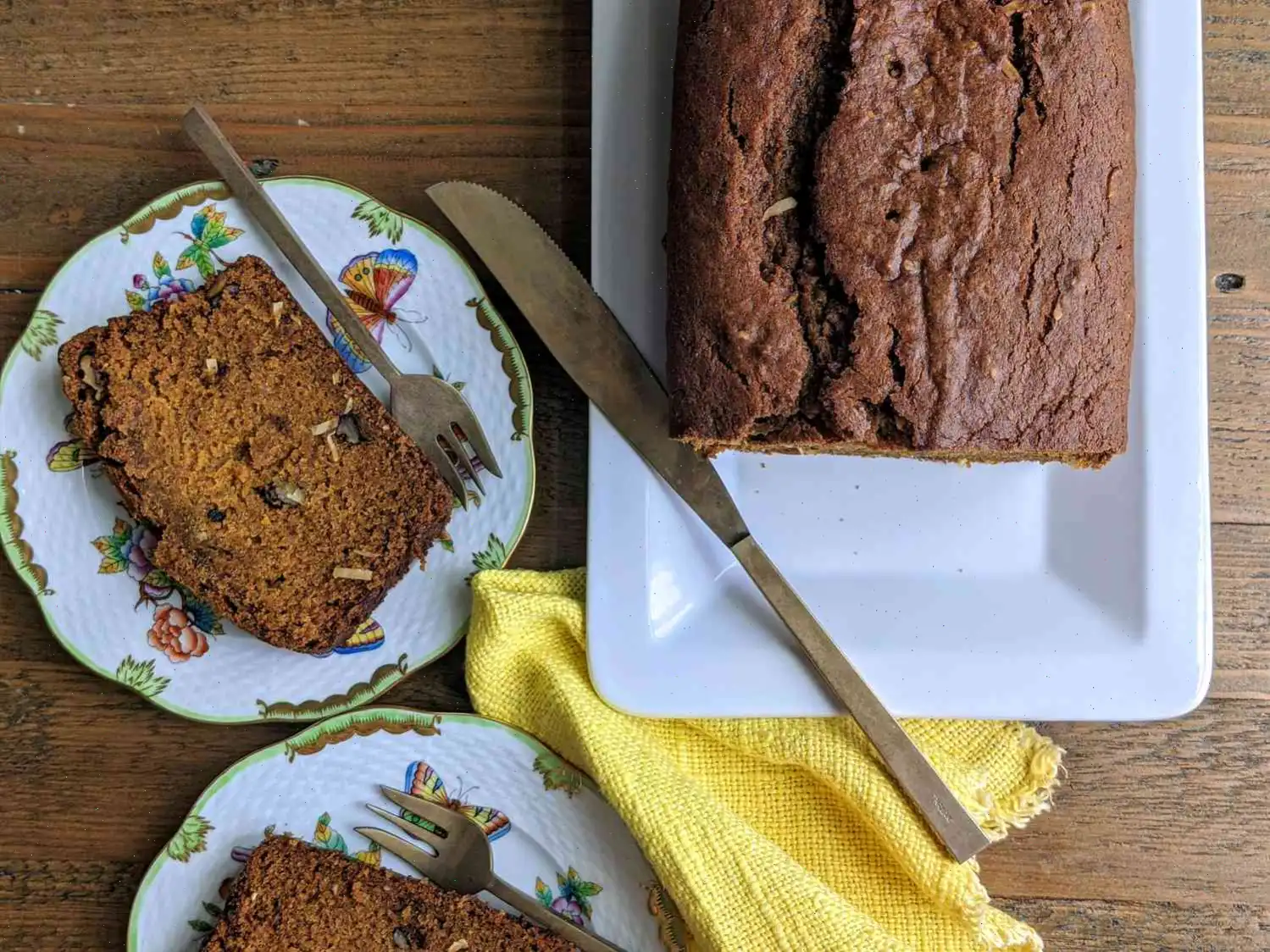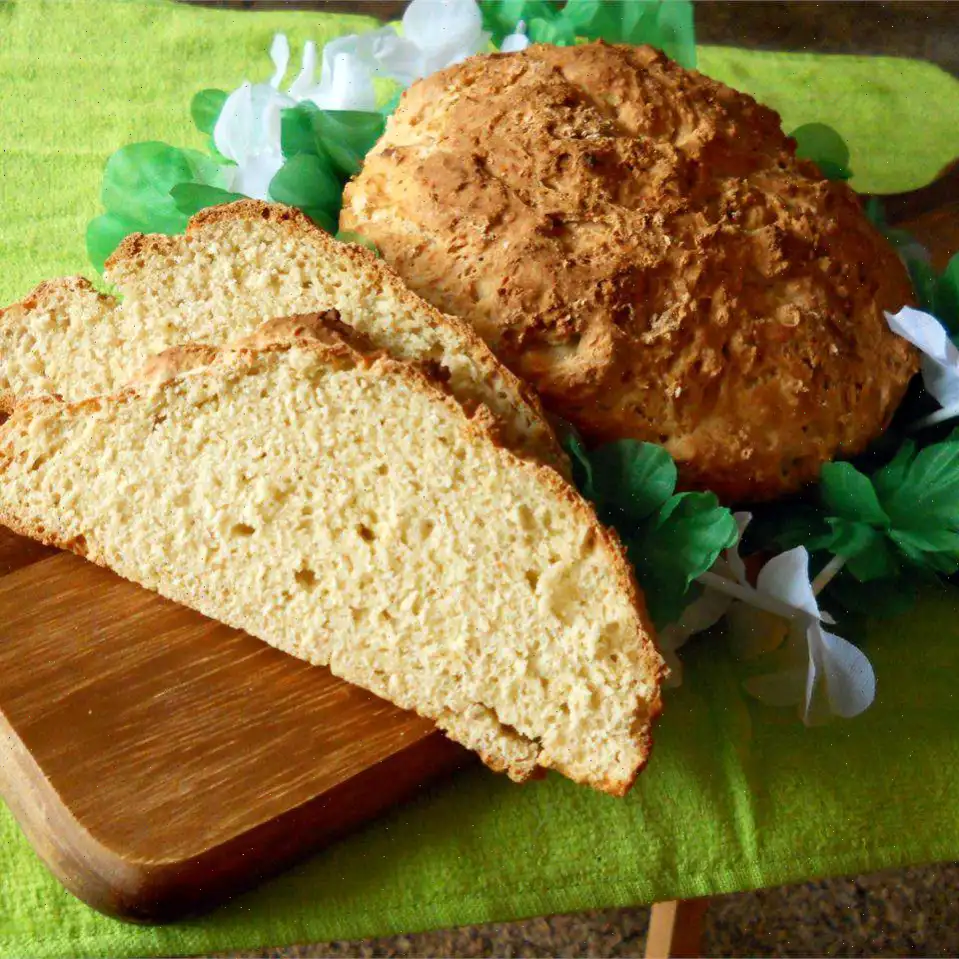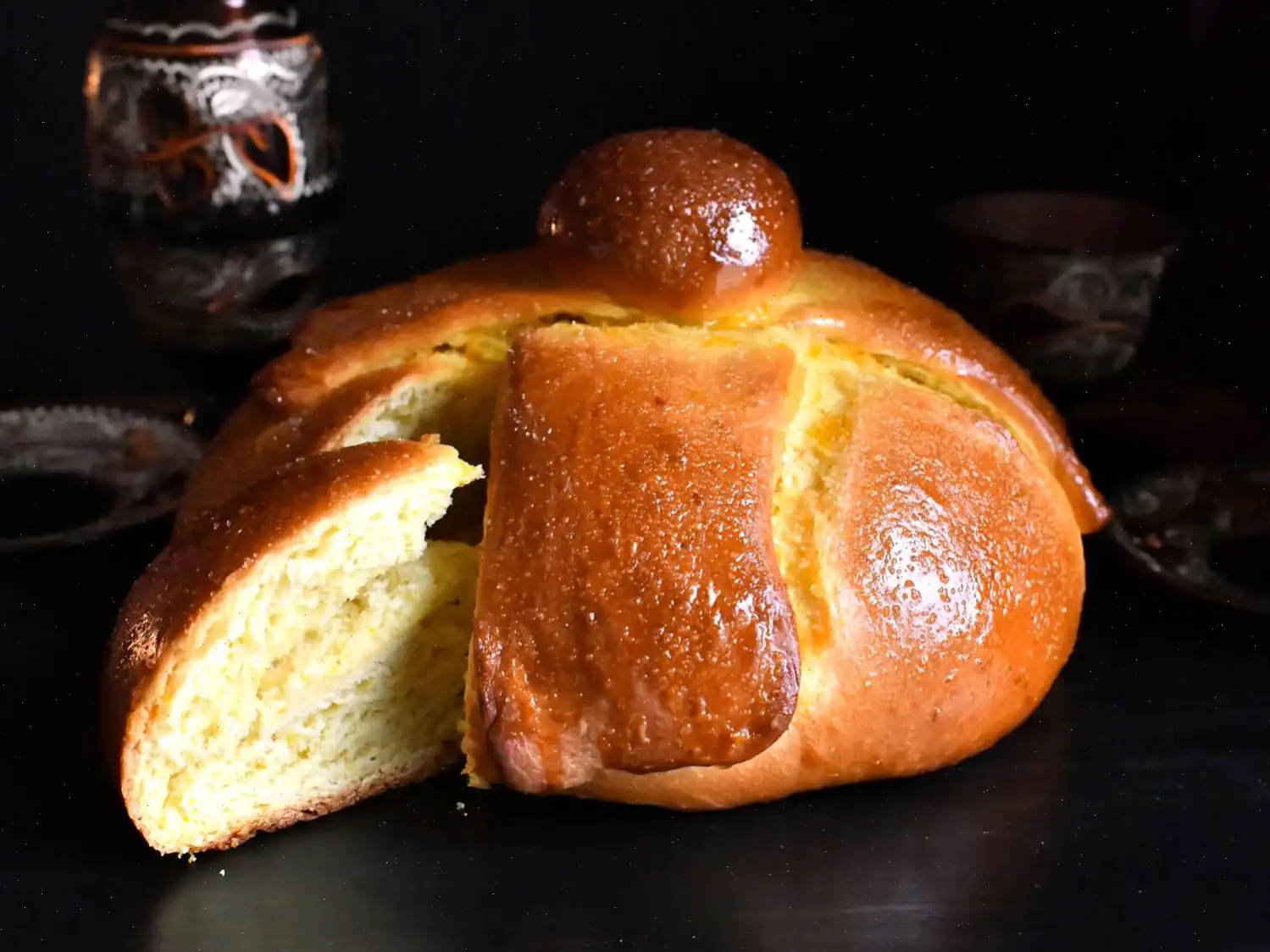
Irish Soda Bread Scones Recipe
Ingredients
This recipe was developed at its original yield. Ingredient amounts are automatically adjusted, but cooking times and steps remain unchanged. Note that not all recipes scale perfectly.
Original recipe (1X) yields 8 servings.
- 1 cups all-purpose flour
- 1 cup quick-cooking rolled oats
- 2 teaspoons baking powder
- teaspoon kosher salt
- teaspoon baking soda
- 5 tablespoons granulated sugar, divided
- cup cold unsalted butter, cut into -inch pieces
- cup raisins or dried currants
- teaspoon grated orange zest
- cup plus 3 tablespoons cold whole buttermilk, divided
Directions
Step 1: Gather all ingredients.
Step 2: In a large bowl, whisk together flour, oats, baking powder, salt, baking soda, and 1/4 cup of sugar until well combined.
Step 3: Cut the cold butter into the flour mixture with your fingers or a pastry cutter until the dough resembles coarse meal.
Step 4: Add the raisins, orange zest, and cup plus 1 tablespoon of buttermilk. Stir until just combined.
Step 5: Transfer the dough to a lightly floured surface. Pat it into a 7-inch circle, about -inch thick.
Step 6: Line a baking sheet with parchment paper. Using a floured bench scraper or knife, cut the dough circle into 8 wedges. Place the wedges on the prepared baking sheet, leaving about 1 inch of space between them. Alternatively, you can scoop 8 (1/3-cup) mounds of dough onto the baking sheet, spacing them about 2 inches apart.
Step 7: Brush each scone with the remaining 2 tablespoons of buttermilk. Sprinkle the remaining 1 tablespoon of sugar on top of the scones.
Step 8: Place the baking sheet in the freezer and freeze the scones for about 30 minutes until chilled.
Step 9: Preheat the oven to 425F (220C).
Step 10: Bake the scones in the preheated oven for 20 minutes or until the tops and bottoms are golden.
Step 11: Remove from the oven and let the scones cool completely on the baking sheet for about 30 minutes.
Step 12: Serve warm or at room temperature with butter and jam if desired.
Nutrition Facts (per serving)
- Calories: 318
- Total Fat: 13g (17% DV)
- Saturated Fat: 8g (39% DV)
- Cholesterol: 34mg (11% DV)
- Sodium: 313mg (14% DV)
- Total Carbohydrate: 45g (16% DV)
- Dietary Fiber: 2g (8% DV)
- Total Sugars: 15g
- Protein: 6g (11% DV)
- Vitamin C: 1mg (1% DV)
- Calcium: 120mg (9% DV)
- Iron: 2mg (11% DV)
- Potassium: 183mg (4% DV)
* Percent Daily Values are based on a 2,000 calorie diet. Your daily values may be higher or lower depending on your calorie needs.
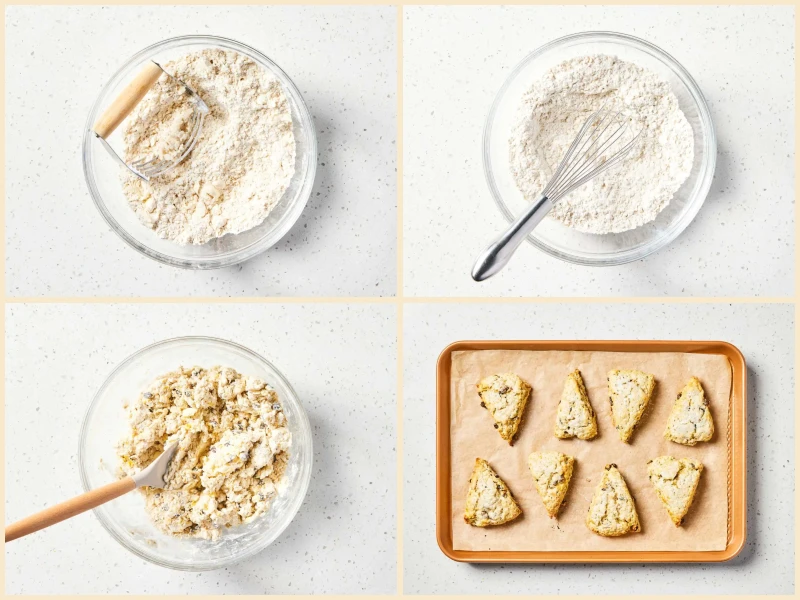

History and Origin of Irish Soda Bread Scones
The origins of Irish Soda Bread can be traced back to the 19th century in Ireland, when bicarbonate of soda (baking soda) replaced yeast as a leavening agent. This change was driven by the availability of soda and the country's frequent lack of yeast. The recipe quickly became a staple of Irish households, often baked with buttermilk and sometimes flavored with raisins or caraway seeds. As for the scone version, it is a variation that is lighter and more biscuit-like, making it perfect for breakfast or afternoon tea. The combination of oats, butter, and buttermilk lends the bread a rich, tender texture and a hearty, comforting flavor.
Regional Features
While Irish Soda Bread is famous across Ireland, the version known as "scones" has become a popular variation not only in Ireland but also in the UK and parts of the United States. Irish Soda Bread Scones typically include rolled oats, a feature unique to this recipe compared to more traditional soda bread. Oats add a mild nuttiness and create a more delicate crumb. In certain parts of Ireland, variations of soda bread are made with different types of flour, such as wholemeal or spelt, making the bread richer and denser. Raisins or currants are also a common addition, providing a touch of sweetness that balances the slight tang of the buttermilk.
How Irish Soda Bread Scones Differ from Similar Dishes
Irish Soda Bread Scones differ from regular soda bread in both texture and presentation. Traditional Irish soda bread is typically baked in a round loaf, while scones are divided into wedges or spooned into round shapes, creating individual servings. Another key difference is the light, crumbly texture of scones, which is less dense than the classic soda bread. Unlike scones made with yeast or self-raising flour, the Irish version uses baking soda, which results in a quicker rise without the need for kneading or waiting for the dough to rise. Additionally, scones tend to be slightly sweeter and richer due to the inclusion of butter and sugar, making them more of a treat than a simple bread.
Where Are Irish Soda Bread Scones Typically Served?
Irish Soda Bread Scones are most commonly enjoyed as a breakfast or tea-time snack. In Ireland, they are often served warm with butter, jam, or honey. They can also be paired with a cup of strong Irish tea or coffee, making them a delightful start to the day or a comforting afternoon snack. In more modern settings, these scones might be served at brunches or in cafs, particularly in places that focus on traditional Irish cuisine. Youll also find them on the menu in many bakeries or restaurants specializing in European or British-style pastries.
Interesting Facts About Irish Soda Bread Scones
- In Ireland, the tradition of baking soda bread dates back over 150 years, and it remains an essential part of Irish culinary heritage.
- The cross cut into the top of traditional Irish soda bread is said to ward off evil spirits, although today its primarily a practical tool to help the bread bake evenly.
- While most scones are associated with the UK and Ireland, the use of baking soda in soda bread was a revolutionary change that made baking faster and more accessible to families without access to yeast.
- Adding oats to the dough gives the scones a slightly chewy texture, while the raisins or currants provide bursts of sweetness that complement the tang of the buttermilk.
- The scones can be customized with different add-ins, such as citrus zest, dried fruits, or even nuts, offering versatility to suit various tastes.
FAQ about Irish Soda Bread Scones Recipe
Comments
Patricia Carter
05/15/2024 04:02:33 PM
I absolutely loved making these scones! As a first-timer, I was pleasantly surprised at how easy they were to make. During my few attempts (and a minor butter mishap where I used salted butter instead of unsalted, but forgot to add the extra salt in the recipe), I ended up adding a bit more baking soda than required. To my delight, they turned out perfectly! I chose to bake the dough in a rounded pancake shape rather than cutting it into triangles, which helped avoid dried-out corners. Oh, and I couldn't resist adding some extra currants because I just love them! 😊
Timothy Jackson
07/10/2023 01:28:07 PM
My cookie turned out a bit crumbly, so I'll make sure to mix the ingredients more thoroughly next time. Despite that, it was still delicious! I improvised by substituting raisins with finely chopped dates, and it worked out great.


